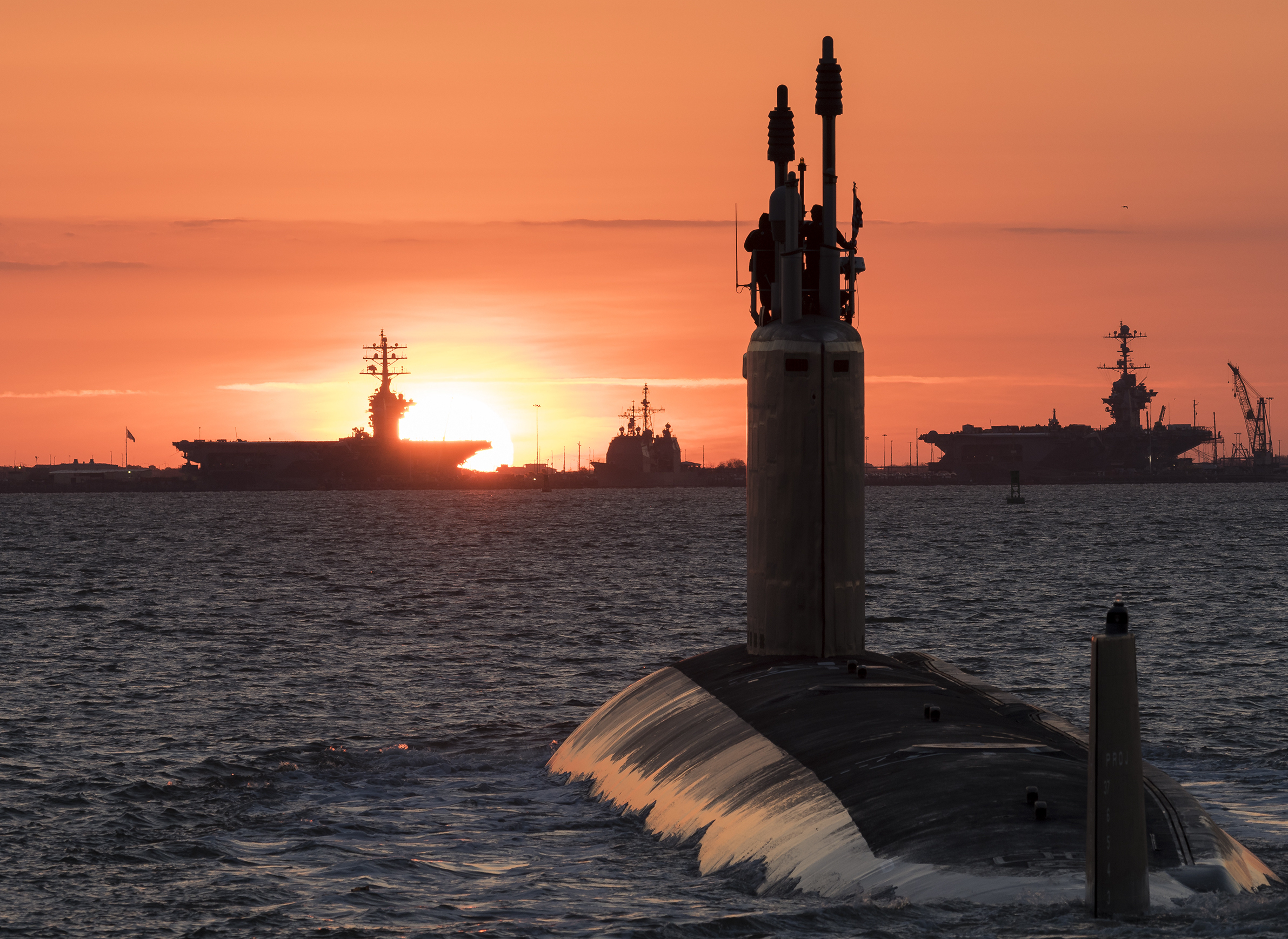
ARLINGTON, Va. – The submarine community wants to preserve its ability to operate as a silent service under the seas while also contributing to the wider fleet and joint fight, the commander of the Submarine Force said today.
Speaking at the Naval Submarine League annual symposium, Vice Adm. Chas Richard said his team is putting together a new Vision 20XX document to outline the submarine force’s role in a future fight.
Richard, who later this month will leave SUBFOR to command U.S. Strategic Command, said he hopes the vision document will be iterative and will constantly monitor changes in real-world operations and threats. Though he said he’s keeping the document classified for now and that he hadn’t briefed the rest of the submarine community on it yet, he previewed four main points from the vision.
“I think we must jealously guard the ability to have no communications, no GPS, no contact; you just have a boat, the captain runs to the safe, they open up the sealed orders, and based on what they see they act in the best interest of the queen. We will always jealously guard the ability to provide that back to the larger Navy,” Richard said.
“But we’re going to have to be equally fluent in operating interdependently with the broader fleet, to make a contribution that we can uniquely make because of our access – it may be in sensing, it may be in effects, but we are going to have to be able to run that spectrum back and forth, I think, in ways we hadn’t thought about before.”
This notion falls in line with what much of the rest of the fleet has discussed about operating in a high-end environment, relying on submarines and unmanned underwater vehicles to go in first and create conditions for surface ships and aircraft to follow behind.
Another key idea in the Vision 20XX document, Richard said, is that “our ability to avoid detection, our stealth, is our greatest asset. But when we think about what that means moving into the future, this becomes more than simply controlling our radiated signatures in the acoustic spectrum. Electromagnetic becomes just as important, and I think the thing we have to add in is now our disturbance of the environment. We’re getting to the point where it doesn’t matter if you know based on the platform’s radiated noise; you did something to the environment that is detectable, and that’s how they figure out where you are or how we figure out where they are. That’s a direction we’re pushing now.
“It starts with something as simple as, we are never going to periscope depth again unless we want to; we are simply going to make that obsolete, that is a goal specifically that gets after what I’m talking about,” he continued.
“And more fundamentally, you can describe it as, get deeper. But we have to think our way through that in terms of all the implication.”
His other two points dealt with the speed of bringing new capabilities to the fleet: technology is changing faster than the acquisition system can keep up, the admiral noted, and the Navy may need to “break some plates” to bring the latest and greatest to the fleet to win a high-end fight.
Specifically, he said, undersea command and control is unique and tricky, and the Navy may need to be willing to overhaul that architecture. The Navy is using artificial intelligence and machine learning already, he said, and DevSecOps is replacing the traditional Acoustics Rapid Commerical-off-the-Shelf Insertion (ARCI) model as the Navy needs more capabilities and on a faster timeline.
“I love ARCI. I know many of the people in here put together the ARCI model. It is revolutionary, they are going to build statues and name buildings after people – but ARCI is so last century, we have to go to the next step; DEVSECOPS is that,” Richard said.
Noting that the sub force is already moving ahead for a high-end fight, Richard mentioned in his speech that multiple submarines today are using artificial intelligence and machine learning (AI/ML) to support their Commander, Undersea Surveillance (CUS). SUBFOR has worked through the cybersecurity issues and application development, and “we are now starting to describe our capability in AI/ML in terms of its human equivalent, in terms of this box equals this type of operator. I won’t give you the exact number, they tell me it’s classified, but we are at that point where we can make an equivalence statement in terms of the performance of what we can do inside sonar.”





